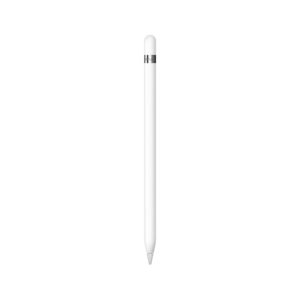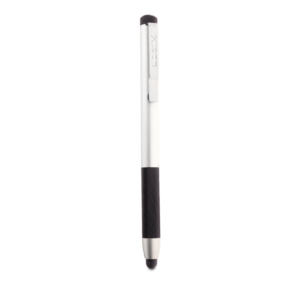iPad technology has had a significant impact on the disability community in a variety of ways including, communication, access to information, and recreation. The range of use has expanded significantly since the introduction of built-in accessibility features starting with VoiceOver in 2009 and Switch Control in 2013, with more updates and features continuing to be released to improve access for users and increase compatibility with various external accessibility devices. One of the primary challenges for use for individuals with motor impairments is accurate on-screen selection and control. Apple’s iPad has built-in touch accommodation features which allow support workers to modify which touch is recognized and which is ignored, however; alternative external touch accommodations are also available, such as using a stylus or Apple Pencil. Each of these input methods: Apple Pencil; stylus (generic); and manual entry (with or without touch accommodation); have costs and benefits and the appropriate support may be different for each individual.
All three methods were tested using two apps for input accuracy and reaction time: Animal Puzzle using the ‘drag and drop’ gesture; and Dexteria Jr. assessing reliability and consistency over varied iPad positioning (on flat surface, on flat surface with hand resting on iPad, and on a stand).
APPLE PENCIL

Product: Apple Pencil
Producer: Apple Inc.
Cost: $129-$169
Compatibility: iOS
EASE OF USE: Simple Instructions Helpful ★★★☆☆
- Some instructions required for initial set-up that are not directly obvious and not included in box;
- Must be paired with iPad for use
ADAPTABILITY: Limited Setting Options ★★☆☆☆
- Direct modification only available when used with iPad Pro, otherwise no modification options;
- Can manipulate some general settings on iPad to individualize, though these will impact all input on iPad not only through Apple Pencil.
ACCESSIBILITY: Suitable for Most Users ★★★☆☆
- Length of device provides good grip and is well weighted;
- Grip strength and fine motor control would need to be assessed before determining if this would be a suitable option;
- Additional assistive pencil grips would allow for greater personalization;
- Seamless interaction with iPad for both specific activities and navigational gestures during testing without lag or unintentional inputs (Bluetooth connection overrides manual entry when active);
- Consistent reactions when tested on flat surface, on flat surface with hand resting on iPad, and on a stand, using Dexteria Jr. app;
- Best performance in terms of accuracy and reliability of all three methods.
COST VS. VALUE: Expense Greater Than Return ★★☆☆☆
- Based on use as an assistive touch tool only, the return does not justify the expense;
- Though this method overall had the best performance, the lack of modification options and high cost of replacement if damaged do not make this a realistic option for most users.
Consider if:
- Expense is not a concern;
- User has both visual and gross motor impairments;
- iPad tasks often require precise touch.
Pass if:
- User is likely to drop or knock device.
OVERALL RATING: ★★★☆☆
STYLUS

Product: Stylus (Generic)
Producer: Multiple
Cost: $1.99
Compatibility: iOS/Android
EASE OF USE: Grab and Go ★★★★★
- Ready out of box;
- Many stylus available are stylus-pen combinations, highly recommend using tape to restrain any moving/twisting parts as they may impact user’s ability to grip.
ADAPTABILITY: Limited Setting Options ★★☆☆☆
- As it does not require pairing with iPad, there are no direct modification options available; though as with the Apple Pencil, some general iPad settings can be modified.
ACCESSIBILITY: Limited Field of Users ★★☆☆☆
- Length of stylus tested was short and difficult to handle, though a variety of different styles are available on the market. A longer stylus without any additional features (pocket clip, lid for pen, etc.) would have been easier to maintain a secure grip;
- Tip of stylus was sticky when moved across screen making it difficult to accurately draw and select items. There was significant enough friction to cause the iPad to move when tested with stylus while secured on a stand;
- Noticeable reaction time lag impacted accuracy when testing ‘drag and drop’ gestures on Animal Puzzle app, requiring user to make multiple attempts to complete task;
- During positional testing with Dexteria Jr., there were two input errors (unable to read input, unintentional input read) when tested on flat surface with hand resting on iPad;
- Length of stylus caused hand to obscure screen during use, causing significant decrease in accuracy.
COST VS. VALUE: You Get What You Paid For ★★★☆☆
- A stylus is cheaper alternative for those looking to test out Apple Pencil-style input without the expense;
- The wide variety of stylus available gives greater choice, with higher quality stylus coming at a higher cost;
- Based on use as an assistive touch tool only, this may be a suitable option but stylus design and purposes of use would need to be considered before making a selection.
Consider if:
- User requires touch assistance for only a limited number of iPad activities;
- User is able to regulate pressure placed on iPad screen from stylus tip.
Pass if:
- User has visual impairments.
OVERALL RATING: ★★★☆☆
MANUAL ENTRY

Product: Manual Entry (Using built-in accommodation features)
Producer: Apple Inc.
Cost: Free with iOS
Compatibility: iOS
EASE OF USE: User Guide Required ★★☆☆☆
- Accessing Touch Accommodation control requires user to navigate through a series of nested menus: settings > general > accessibility > touch accommodations;
- Limited on screen instruction of what each setting controls, and relies on ‘trial and error’ method to determine correct settings for user.
ADAPTABILITY: Some Personalization Possible ★★★☆☆
- Manual entry input allows for the widest range of personalization using touch accommodation features, however; many of the setting modifications under accessibility features are intertwined and changing one may modify or override settings in another;
- Placement of iPad and activity may require these settings to be changed or disengaged to ensure they continue to support accessibility and do not cause additional barriers for use.
ACCESSIBILITY: Broad Range of Users Served ★★★★☆
- Overall manual entry is suitable for most users, and touch accommodations can improve accuracy when correctly configured, however; test results were extremely varied between users, with gross motor control and visual acuity having a significant impact;
- Without touch accommodation enabled, manual entry was least reliable and least accurate when tested flat on surface with hand resting on iPad (read errors causing input to ‘jump’ across screen) and forced awkward hand positioning when tested on a stand;
- With touch accommodations ‘use initial touch location’ enable, accuracy and reactivity improved but settings required assessment and modification between activities and iPad placement, and a similar result could be achieved by covering the palm of the hand with the sleeve of a shirt to prevent unintentional input.
COST VS. VALUE: Free ★★★★★
- These features are well worth exploring, though time should be taken to test one at a time to gain an accurate understanding of each modification;
- Using one or two modified settings at a time provides more reliable results and makes the system more set-up friendly when moving between activities;
- Support workers should be aware that manipulation of these settings impact iPad user input overall, and any sudden significant changes without proper preparation for the user may inhibit access and cause additional barriers.
Consider if:
- User repetitively taps screen to trigger iPad reaction;
- User consistently interacts with iPad in one position,
Pass if:
- User has gross motor impairments.
OVERALL RATING: ★★★★☆
FINAL WORD
Results from testing did not establish one assistive touch method as being significantly superior to any other, but rather demonstrated that accommodations and supports for individuals with motor impairments need to be as unique and individual as the user requiring them. Each method has costs and benefits, and these need to be weighed against individual needs and what this assistive tool is being used for.